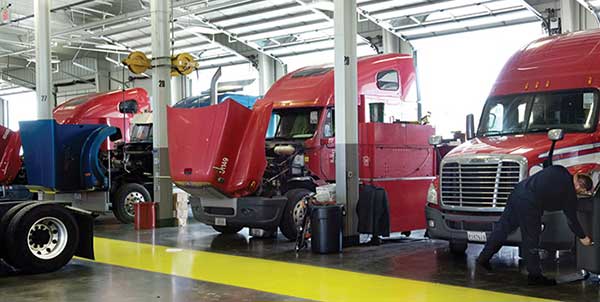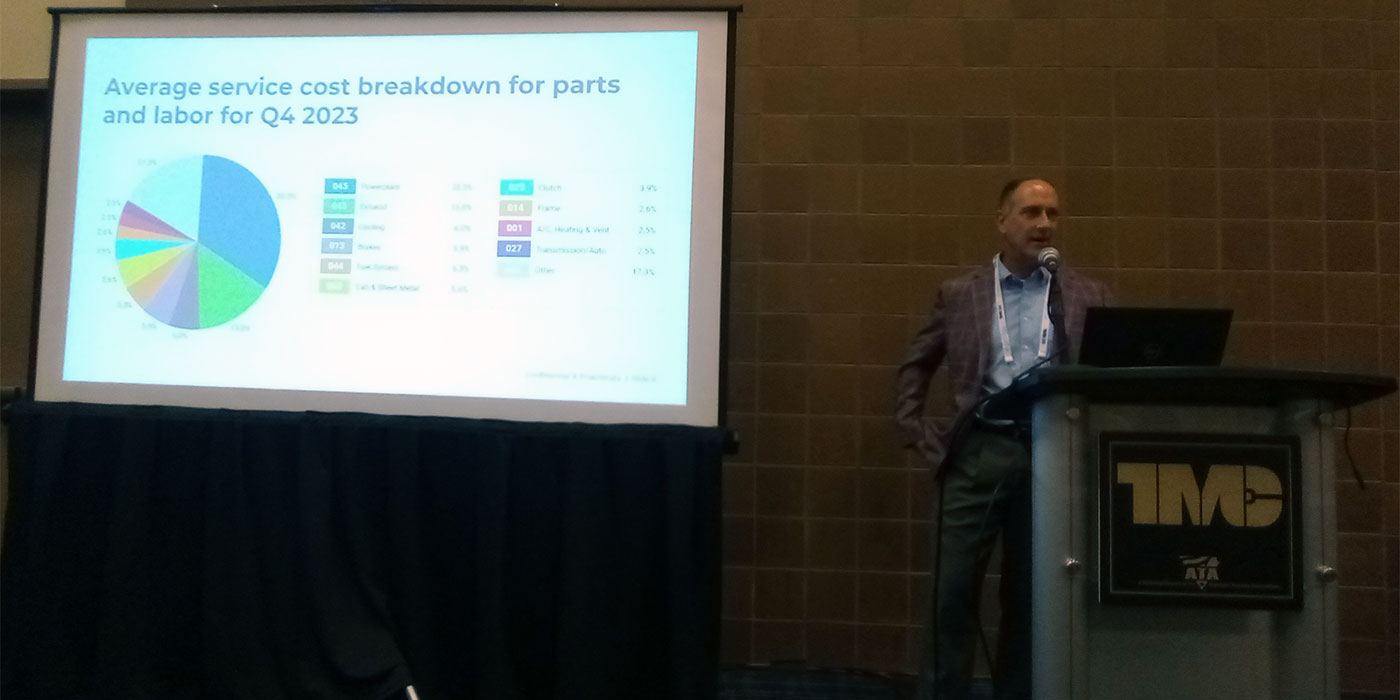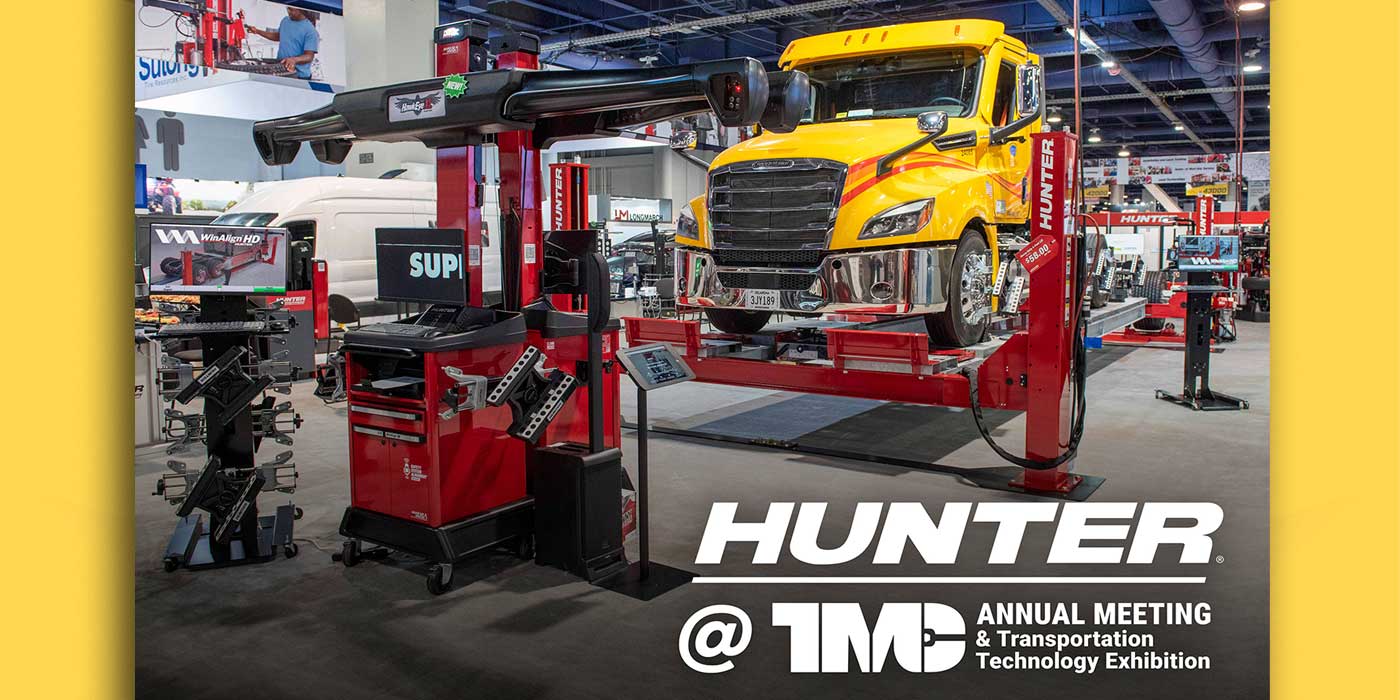Your technicians are asking for more tools. Do you really need them? How are they using the tools you most recently invested in? Did you invest in tools recently?
It seems recent, but when you look at your purchase data, it has been a while—longer than you thought. Running a profitable shop means having the right tools and using them effectively. In fact, they are just as imperative in getting trucks in and out of bays efficiently as the latest service data.
We reached out to a few of the top minds in the tool segment to get their thoughts on how to track your tool investment.
Electrical maintenance
Staying on top of electrical maintenance can improve everything from aftertreatment system performance to higher CSA scores. Your fleet manager is doing her part by spec’ing the best electrical equipment on your fleet’s trucks, and you need to make sure your technicians are using the right tools to keep them powered up.
“Battery and electrical system service tools and equipment must allow the technician to quickly diagnose an electrical system issue, battery or battery pack problem, identify if batteries need to be replaced or recharged and safely charge AGM batteries/battery packs quickly without having to remove batteries for the charging process,” said Kimberly Cottle, president and chief executive officer of Associated Equipment Corp.
Chargers. Analyzers. Clean power supplies. Multimeters. They’re all par for the electric maintenance course.
“Versatile and powerful chargers used in top tier fleet maintenance operations enable the technician to determine if a battery will take a charge before time is spent charging the battery,” Cottle said, “and can be used to charge battery packs without removing them from the vehicle as well as act as a power supply for extended procedures.”
“We believe it is reasonable for a fleet to review its battery service strategy every three years. Battery chemistry and construction are changing rapidly and fleets need to ensure that their service strategies are in tune with their battery population.”
—Jim O’Hara, Clore Automotive
Cottle noted that if you have a battery room with multi-battery charging stations for charging/refreshing inventory, products that can perform deep discharge recovery, like Associated Equipment Intellamatic ESS6011 12/24V chargers, can recover highly sulfated batteries optimizing battery life expectancy.
Once you have the right electrical maintenance tools, you need to ensure that you’re using them to the fullest.
“We suggest looking at two key metrics: avoidance of equipment downtime due to battery-related issues and battery longevity,” began Jim O’Hara, vice president of marketing for Clore Automotive.
“The first metric aims to quantify reductions in the cost and negative customer impact caused by unexpected service disruptions. The second metric aims to quantify the financial benefit of extending battery service life.”
Tracking those two metrics means capturing the right data. O’Hara recommended starting right now before you make changes to get a baseline—how many battery-related service issues did you have in the past two years? And how long are your batteries lasting before replacement within that time frame?
Once you have your averages, you can decide what maintenance practices you need to improve upon, create your plan and put your tools to work. Keep in mind that if your fleet is using a mix of flooded batteries, AGM batteries and pure lead AGM batteries, the technicians servicing those vehicles should be well versed in the various service challenges. O’Hara pointed to having tools to tackle the right battery spec, like the Clore Automotive fleet chargers from SOLAR, models PL5100 and PL6800. These models feature high (100A) charge rates to enable the battery pack to reach full charge during a typical service event. Maintaining high state of charge on the battery pack is key to preventing no start conditions and maximizing battery service life.
As you put the right tools to the right uses, track the aforementioned metrics as you go.
“We would expect to see a reduced incidence of service disruption and an increase in battery service life, resulting in a longer replacement window,” O’Hara said. “If, through adopting best practices, a fleet can extend reliable battery life by 25%, 50% or even 75%, the resulting savings is significant. We would expect a return on investment within two years of solution implementation.”
Your ROI mileage may vary, as Associated Equipment’s Cottle noted:
“The ROI based on reduced service time, maximized uptime, faster throughput, improved battery and electrical system life and reduced downtime is typically six to 12 months depending on the type of fleet.”
The only way to know for sure is to make the right tool investment, track the effectiveness of your maintenance plan and review the data.
Hand tools
Hand tools can feel like an extension of the technician; they’re the conduit through which their technical work is completed. You want to ensure that they’re using the best. It might seem like nuts and bolts maintenance weeds, but things like ensuring that your torque tools are properly calibrated make a big difference in everything from truck efficiency to shop safety.
Team Torque knows that the devil is in the details. That’s why it’s made a business out of testing, repairing and calibrating all types of torque instruments, including torque wrenches (beam, click, dial and digital), torque multipliers, torque pulse guns, torque screwdrivers, torque testers and torque watches. If it torques, they can test it.
“ROI of accredited torque tool calibration and repair services can be measured in reduced liability, reduced rework, and increased safety,” said Richard Sabot, general manager for Team Torque. “In addition, preventative maintenance of your torque tools can improve quality conditions, increase the life expectancy of your tools and reduce future large repairs.”
“Every five to seven years, you can see a generational shift in this type of technology. Our trailer testers typically see seven to ten years of duty in the field.”
—Ian Vinci, IPA
Current liability claims, rework dollars and tool maintenance cost could indicate a need for the proper torque tools calibrations and repair. “A properly trained technician using a calibrated torque tool following an approved process will greatly reduce liability and rework,” Sabot noted.
To be sure, reaping the tool investment reward is all about having the right process in place.
“How do you maximize your tool investment? General tool operation and maintenance—the maintenance is key,” stressed Chris Hirsch, director of sales for Florida Pneumatic Mfg. Corp., manufacturer of air tools, pipe threading equipment and intake compressor filters. “Although it’s very basic, lack of maintenance is the demise of all air tools.”
Determining the ROI on air tools investment follows much of the same structure as your other tool ROI calculations. If you’re not using pneumatic tools, you’d need to take stock of your service process to see if they are a fit. Hirsch recommends asking yourself these questions:
- What task will the tools be required to perform?
- Is versatility an issue or will they be used for one specific task?
- How often will they be operated?
- How fast will they complete the given task?
- Will the new air tools provide better performance or efficiencies vs. the prior tool set-up?
“Pneumatic tools are generally more durable and require far less maintenance than their electric or cordless counterparts,” Hirsch said. “Fleet service managers must also consider the initial set-up costs such as compressors, filters/regulators and air hose drops throughout the facility.”
Whether you’re looking to invest in air tools or already using them, Hirsch reiterated the importance of evaluating the time each tool is in use and if they are operating efficiently.
“The fleet manager would need to know the current output, performance and efficiency level of his employees under the current process or using the current tools as well as the time lost due to the tools being down or in repair. General ROI time frame for tools should be around one to two years.”
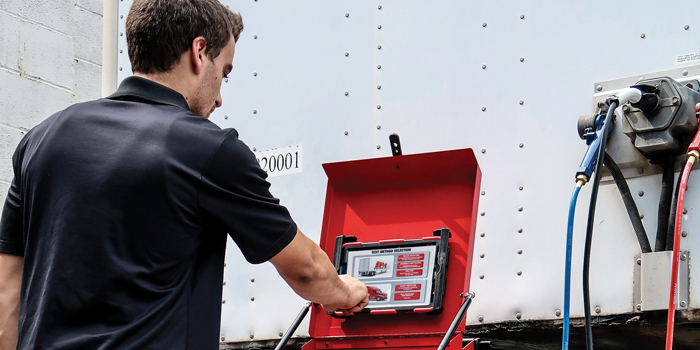
Diagnostic Tools
Scan tools are the key for unlocking the truck’s data door, but not all keys are created equally. Not only do you need to be sure that you have enough scan tools to go around, but you need to make sure they can tell you the right information from the right truck.
“The number one issue a fleet service manager looks at is: how do I reduce my repair dollars per service mile?” said Chris Freeman, director of heavy-duty sales and training with Autel U.S. “Data is the secret, giving you the proper tools and bidirectional testing procedures to take that collected data and make an informed decision. Taking that data to the next level through true OEM-modeled bidirectional testing, a technician can, over a period of time, see service trends and forecast a repair before it becomes a breakdown on the road.”
Your scan tool of choice can help you do this, provided it’s capturing the right data and you’re putting it to use.
“Lead Acid Battery technology has been around for over 150 years but more recent advances in battery technology such as AGM, Enhanced Flooded and Lithium (SLI) have forced battery tester and battery chargers to evolve quickly.”
—Kimberly Cottle, Associated Equipment Corp.
“Diagnostic tools need to look at the vehicle as a whole,” Freeman said. “Then do a proper triage on all of the vehicle systems to find an intermittent issue that could result in a costly breakdown on the road. Providing health reports is the next step. Having a PDF or other printable file you can save on every vehicle you connect to is priceless, and studying the health reports will allow you to see a trend that could possibly develop and nip it in the bud.”
Digital technology moves fast. It’s a good idea to review your current scan tool capabilities and see if there is an advantage (or huge service process-changing impact) in switching to a new solution.
Consider Freeman’s service prediction scenario. If your scan tool is helping you fill a data lake full of standardized service data, from triage through repair, it’s building the foundation upon which predictive maintenance models will be built.
“If this is completed in a timely manner and the data is properly analyzed the ROI is instantaneous,” Freeman predicted. “Based on the size of the fleet and how the fleet is used you could easily save many thousands of dollars in just the first six months.”
One more important question to consider concerning your current scan tools: How often is your scan tool updated by its manufacturer? Software updates ensure that your diagnostic equipment keeps up with the latest truck advances.
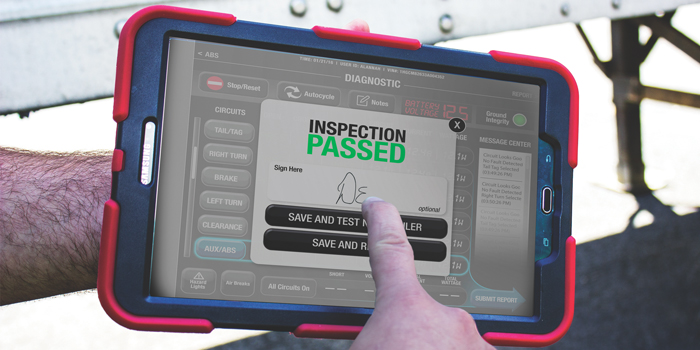
Don’t forget the trailer connection
Maintaining a truck’s electrical system is only half the battle—trailer maintenance is its own beast. So how are you going to tame it?
You guessed it: The right tools.
“If you don’t have a diagnostic trailer tester, you’re throwing money away. What you could do with one technician, you’re doing with two and making mistakes,” Ian Vinci, president of IPA said bluntly.
Consider that the CSA Violation Severity for a defective ABS malfunction indicator lamp on a trailer manufactured after 3/1998 is four points, and additional trailer lamp malfunctions can quickly add up to 12, 18 and even into the 20 to 30 point range depending on how poorly trailer connections are maintained (not to mention all of the other trailer issues that can crop up), and now you can see Vinci’s point.
“Fleet service managers should measure the time it takes for them to perform inspections with their current equipment and add in the cost of overhead they attribute to citations and callbacks after those inspections,” Vinci recommended. He pointed to IPA’s Alpha MUTT trailer testing platform as a potential solution. The mobile, advanced trailer diagnostic tester and inspection system tackles electrical tests such as automatic cross, open, overload and short fault detection, Ground failure detection and cable testing, to name a few, in addition to ABS system and air brake testing procedures.
Once tests are completed, IPA’s proprietary software suite captures all of the inspection data and results, giving you a digital road map for improving your trailer testing practices.
Can’t stand the heat?
Application drives necessity. If your shop is tackling tough, often corrosion related tasks like brake anchor pins, fuel lines, exhaust manifold bolts, clevis pins and engine mount bolts, you may want to consider an induction tool.
What’s an induction tool? Here’s Alicia Hawkins, marketing manager for Induction Innovations Inc., with the answer:
“With the Mini-Ductor you are utilizing ‘invisible heat’ to release metal from corrosion and thread lock compounds without the dangers of an open flame. It offers precise, safe and reliable heat: ¾-in. nuts are turned red hot in seconds.”
To keep technicians efficient, Hawkins noted that the Mini-Ductor Venom portable induction heater touts a two-minute duty cycle—two minutes on, two minutes off. The company also says to use proper coil usage.
“With the coil attachment, it’s recommended that you keep a small gap between the coil attachment and the application you’re heating, as well as not getting the application red hot as that will result in the insulation of the coil to blacken and fray,” she said. “The second you see the insulation blacken and fray, it needs to be replaced with a new coil attachment.”
Proper tool usage is key. Take the time to ensure that your technicians are properly trained, and then check in on them to make sure that the training stuck.
This article was originally published in the July 2019 issue of Fleet Service Technology.

